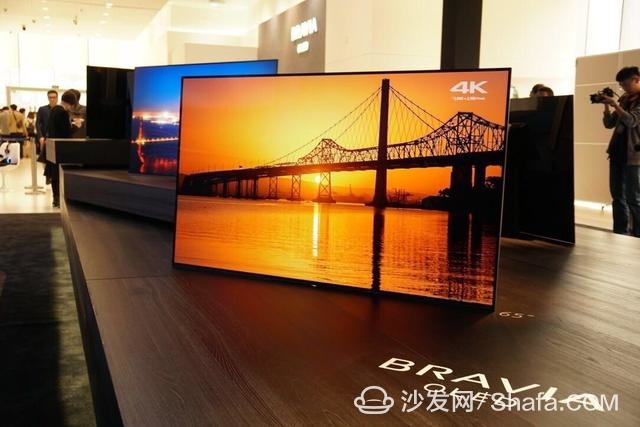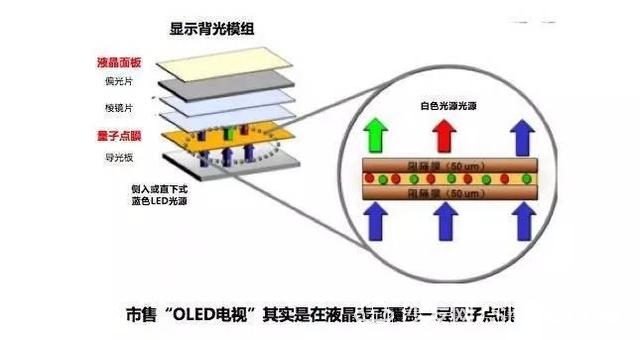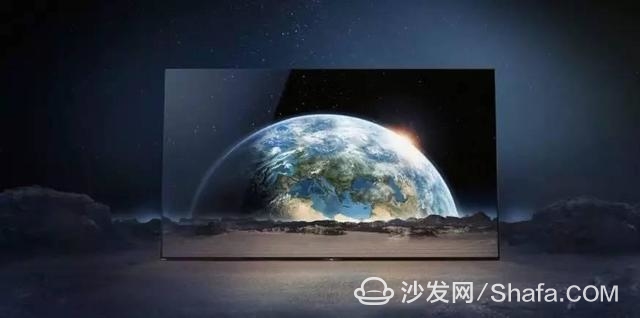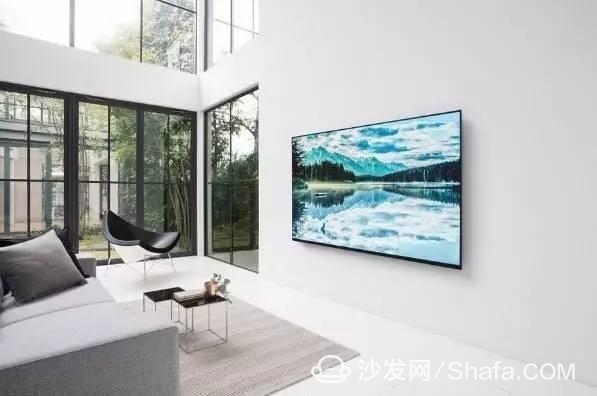
So what exactly is OLED and QLED? Who is more qualified to represent the future display technology?
The two are the same root? No, No!
"Population" is the best way to get rid of all kinds of icing induced and to arrive at the truth. Let's first give FLASH and OLED:
Although the difference between OLED and QLED is only a "point", the technology implementation path is quite different:
Organic light emitting diodes (OLEDs) are organic light emitting diodes (OLEDs). The biggest feature of organic light emitting diodes (OLEDs) is that unlike liquid crystals, they require a backlight source. This is a completely new technology that is essentially different from the mainstream LCD liquid crystals.
QLED is a quantum dot LED TV, which means Quantum Dot TV. Actually, quantum dots at this stage are still essentially LCD TVs. The value of innovation is not great. It only exists as a kind of backlight material and can be regarded as an LCD. A quantum dot film sandwich is sandwiched between the LED backlight layer. The real quantum dot technology is still in the laboratory R&D phase, and there is a big difference between the two. The former is just a concept forged by Samsung. Foreign Digital Display Media Display Daily directed Samsung's "QLED" application to its own products for Samsung's "Liang Guan Li Dai". It also gave a particularly interesting example. "The Samsung marketing team deliberately called 'Apple' as 'orange', causing consumers to mistake Think 'Apple' is 'Orange'." CNET.com, an authoritative media, also reported that Samsung's QLED TV is actually closer to LCD TVs. The true Emissive QLED will take at least several years to be applied to TV products.

note! The universality of the two is also very different. OLED is a generic name, and it is a general term for technology. In the “Notice on Implementing Major Engineering Packages for Upgrading and Manufacturing of Manufacturing Industries†issued jointly by the National Development and Reform Commission and the Ministry of Industry and Information Technology in 2016, OLED has been categorized as a new generation of display technology focused on development. The QLED is just Samsung's own marketing gimmick. It was created by Samsung for its own Quantum-dot LED-backlit LCD TVs. It was exactly the same as Sharp's Quattron.
N dissatisfied? N round rolling!
After the above rapid popular science, it is much simpler to compare the advantages and disadvantages of OLED and QLED in terms of picture quality. Black field, visual angle, response time, energy consumption, etc. are all important manifestations of display technology performance. The following is a look at the competition between the two.
Round1: The black court First of all, look at the black field performance that is critical to the quality of the TV. Black display capability is an important factor affecting the picture quality level, and a deeper black color can bring higher contrast and wider color range, resulting in a more realistic and delicate light and shadow effect.
Because OLEDs are self-luminous, each OLED corresponds to a pixel size, and the OLED screen is composed of millions of OLEDs that can be turned on and off individually. When the OLED pixel is turned off, it is completely non-luminescing and can exhibit a thorough black color; and QLEDs are non-compliant. Self-illumination depends on the backlight. Therefore, the problem of “leakage†is unavoidable, and the backlight will leak out of areas that are supposed to appear black. This problem is particularly prominent on the dark side of a starry sky scene or a wide-screen movie, and will appear light. Degree of haze effect, or blur the edges of bright objects.

Round 3: Response Time The response time is the time required for each diode to transition from the "on" state to the "off" state. Faster response times reduce motion blur and artifacts, providing higher viewing quality.
Each pixel of the OLED is a small diode, and the response time is basically the diode switching time, which can be on the order of microseconds; on the current situation of TVs in the market, the diodes in the QLED TV not only respond more slowly but also are not independent. Work, making the overall turn-on and turn-off conversion further delayed, the response time is mostly in the order of milliseconds, which is thousands of times that of the OLED. When displaying a high-speed motion picture, it naturally inevitably causes the phenomenon of “tailing†that causes crashes.
Round 4: Vendors' camp In 2017, benefiting from breakthroughs in technology bottlenecks and overriding the advantages of other existing display technologies, OLED ushered in a period of rapid growth, and the company’s camp continued to grow and develop. Even Sony, which had launched the world’s first OLED TV It is also a high-profile return that has injected strong energy into this camp. After all, international brands like Sony are very cautious about the selection of products and technology routes. The full penetration of the industry chain and mature technologies are the most basic prerequisites.
On the other hand, QLEDs are currently only Samsung one force to maintain, but also reluctantly pulled to Hisense, TCL two manufacturers to help out, put aside the massive "concept marketing", the invisible fact behind the ineffectiveness of the rare, is not really optimistic about QLED. Hisense is struggling to get OLED panel resources and has to switch to the QLED camp; and TCL is to keep its LCD industry as a profit dairy cow, do not want the LCD era to end prematurely.
In a sense, Samsung's efforts to support the status quo of the QLED camp are comparable to Sharp's Quattron technology. In 2010, after Sharp launched the Quattron four-color display technology, it was generally considered by the market as a transitional technology before the advent of the 4K era, and the market acceptance was not high. However, Sharp still insists on his own way and puts it into production in large quantities. He hopes to open up the market with a "revolutionary upgrade" marketing gimmick. Eventually, the marketing bubble bursts, and Quattron's panel has a huge inventory, causing Sharp to worsen and accelerate the fall.
Samsung's gamble on QLED is similar to Sharp's that year.
Is it different? What is a terrier!
The self-luminous characteristic determines that the OLED TV can be made thinner and more malleable, and can realize screen sounding, flexible bending, and the like. The structural defects of the QLED determine the realization of these few possibilities, at least for the time being, and there are too many variables and unknowns in the coming years.

Even more eye-popping is Samsung’s continued use of OLED screens on the newly released flagship S8. Then, the question is, if Samsung really thinks that QLED is mature and has many advantages, why not use QLED screen on its own flagship mobile phone, instead using OLEDs that have been discredited? At the same time, it is not difficult to find from the propaganda and reporting of the flagship mobile phone S8 that Samsung used many similar “pure visual experience†and “immersive†to describe the shock brought by the OLED screen. What is the difference between this and the other?
In view of this, Samsung's publicity in QLED TV clearly misleads consumers. What is ridiculous is that this kind of propaganda is actually killing one thousand enemy and causing 800 damages. It also affects its own flagship mobile phone. Move a rock to your own feet. Does Samsung have wood?
Uncertainty? Let's take a look at sales data first. In fact, for increasingly rational consumers, instead of discussing who the QLEDs and OLEDs are more qualified to represent the future of display technology, it's better to say who can bring them a more intuitive visual experience. This point can be found in the 51-year sales data of color TV industry's annual market trend indicator. According to the monitoring data of China Yikang 51 (April 3 - May 7) monitoring data, the overall sales of Samsung TV remained the same as that of the same period of last year, the proportion of total sales has shrunk by 10%, and high-end market share has been lost. . As the vanguard of the brand's high-end front, QLED TV did not bring expected positive performance and market feedback to Samsung.

In the final analysis, consumers are more concerned with the actual audiovisual experience of television, rather than the marketing hype. Through heavy marketing obstacles, rational users will more and more clearly realize that the real QLED will take time to come. For the moment, OLED is more qualified to represent the future.
Smart TV/box information can focus on smart TV information network sofa butler (http://), China's influential TV box and smart TV website, providing information, communication, etc. on TV boxes, smart TVs, smart TV software, etc. Answering questions.
The advantage of entertainment tablet lies in having a powerful chip and excellent hardware. If you want to play various online videos on the tablet and run various software smoothly, the performance of the hardware is an absolute prerequisite. In addition, a high-speed and stable WIFI module is also required, which must be compatible with multiple 802.11 B/G/N protocols at the same time, so that the webpage can be loaded instantly when the webpage is opened, and the online video can be played smoothly. So hardware is the premise and foundation, without good performance everything else is empty talk.
In addition to having a good CPU as a prerequisite, it is equally important to carry a professional video player. A professional video player must perform equally well both online and offline.
Entertainment Tablet,High capacity battery Tablet,WIFI Tablet
Jingjiang Gisen Technology Co.,Ltd , https://www.gisengroup.com